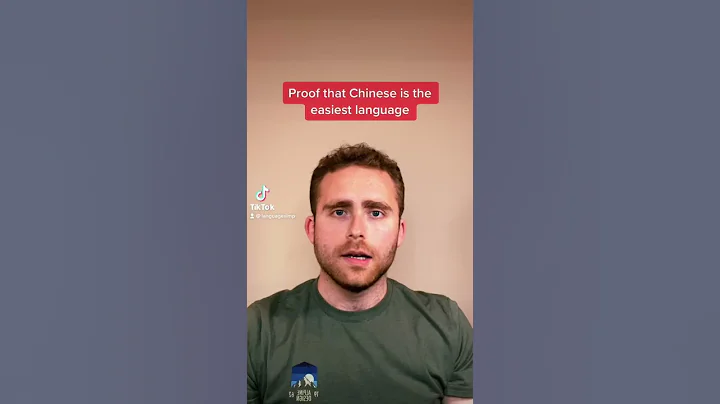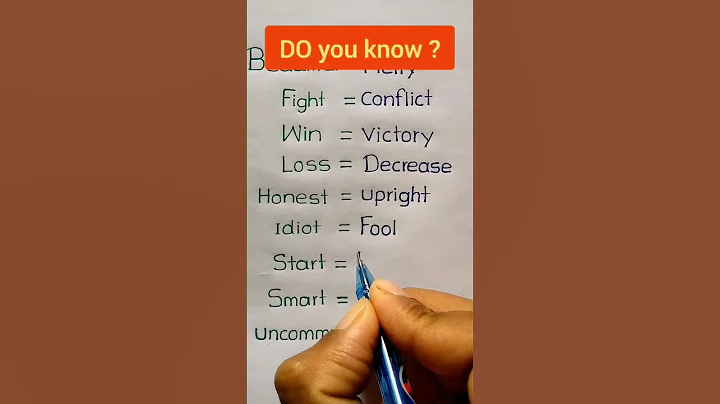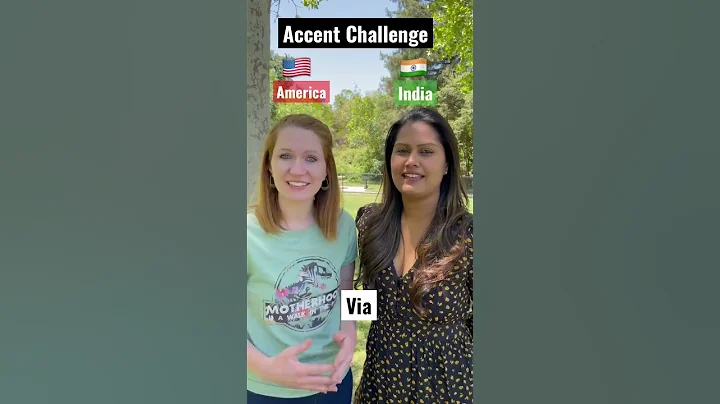
The last lesson of the first grade Chinese textbook currently used in the country is a fairy tale called "Little Snail". The full text is as follows:
The snail family lives next to the grove.
Spring is coming, and the snail mother said to the little snail: "Child, go to the woods to play, the little tree has sprouted."
The little snail crawled, crawled, it took a long time to crawl back. It said: "Mom, the little tree is full of leaves, green and there are many strawberries on the ground."
snail Mom said: "Oh, it's already summer! Go and pick a few strawberries and come back."
snail crawl, crawl, it took a long time to crawl back. It said, "Mom, the strawberries are gone, mushrooms are growing on the ground, and the leaves are all yellow."
snail Mom said, "Oh, it's already autumn! Go and pick a few mushrooms and come back."
snail crawled, crawled, it took a long time to crawl back. It said: "Mom, there are no mushrooms, the ground is covered with snow, and all the leaves are falling off."
snail mom said: "Oh, it's winter! Just stay at home for the winter."

This text has another worth mentioning, this text is the first foreign fairy tale that primary school students come into contact with in their textbooks.
In the textbook, the author of this article is Baummeli of Russia.

I find it very strange. What kind of Russian is this author? Why have I never heard of it?
The primary school student who entered the education process must have a great origin in his first contact with a foreigner's work in the textbook. According to the principle of "both beautiful and beautiful in literature and quality", such an article should be a famous work that can stand the test of famous artists.
But this Russian writer named Baummeli has never heard of it.
so, the author curiously asked a thorough question.
The translator of this foreign fairy tale is Chen Weijun and Mou Zhengqiu. So from the translator's entry point, let's find the ins and outs of this fairy tale translation.
First check the first translator Chen Weijun. In fact, this is a folk writer with quite a lot of works.

Chen Weijun's life photo
The author found a brief introduction to Chen Weijun's resume on the Internet:
——Chen Weijun was born on December 18, 1922 in Siyang, Jiangsu Province. He finished elementary and middle school locally and graduated from Zhejiang University's School of Literature in 1947. He has taught in Wenzhou Middle School , Wenzhou Normal School, etc. He was transferred to Hangzhou in 1956 and served as the editor of the literary monthly magazine "Donghai". He was delegated to factory labor during the "Cultural Revolution". He worked in Zhejiang Art School, Zhejiang Folk Literature Research Association, and Zhejiang Federation of Literary and Art Circles. He served as executive director of Zhejiang Folk Literature Research Association and consultant of the Chinese Story Society. Retired in September 1980.
During Wenzhou , Chen Weijun went deep into the countryside and collected a large number of folk legendary materials. The first folk story he published was " Wuma Street " describing Wenzhou; the first chapter novel he created was " Gaoji and Wu Sanchun " circulated in Zhejiang southern . It was compiled and named "Oujiang Resentment", and this work received positive reviews. He also supported a group of Wenzhou folk literature workers and was a very influential old writer in the Chinese folk literature and children's literature circles.
His representative works include: "Longevity Grass", "Dragon Princess", "Goldfish Lang", "Shenlang and Caigu", "Gaoji and Wu Sanchun", "Oujiang Resentment", " West Lake Folk Story ", "She Folk Story", "She Nationality Meeting Immortals in Tiantai Mountain", "Peach Blossom Jellyfish", "Legend of Wang Xizhi", "Legend of Jigong Wai", "Xi Shi", "Peach Blossom Xi Shi", "White Snake", "Legend of Temple Pavilion", etc., and those who are translated with people include "World Fairy Tales", "Why Dogs Hate Cats", "Gu Nuan Adventures", "Fairy Tales of Adults", etc.
1979, his "Dragon Princess" won the second prize in the 1954-1979 Second National Literary and Art Works Awards Competition organized by the Ministry of Culture and other eight national ministries and commissions.As a representative of Zhejiang, he went to Beijing this year to attend the 4th National Cultural Congress. In 1997, he won the second Zhejiang Luxun Literature and Art Award from the Zhejiang Provincial People's Government with his book "Xi Shi". In December 2001, he won the pure gold medal and other awards from the Zhejiang Federation of Literary and Art Circles for the Province. In February 2002, he was awarded the title of "20 Old Literary Artists in Zhejiang Province with Outstanding Contributions". He died of illness in Hangzhou on April 28, 2005 at the age of 83. ——
Check Chen Weijun's creation chronology. In 1988, he published a translated book called "Adult Fairy Tales". The author indicated that it is the Soviet writer Rashili Baumfuli.
Note that the author of this book is: Baumfuli. It is a word different from the translation of the current elementary school textbook "Baummeli".
In "Adult Fairy Tales", it contains a fairy tale that will become the true face of the text "Little Snail" in the first grade of elementary school.
The name of this fairy tale is: "The Little Snail Who Never Sees the Spring".
Full text is as follows:
What happened in spring, the snail said to his daughter:
"You go to the little black shrub, the snowflakes under the little tree are so big! Go and taste the spring leaves on the tree, the taste of spring leaves is so good!"
The little snail heard that, so he crawled Go, climbed for a long time, and said, "
"The little shrub is not black, it is green! What grows under the tree is not snowflakes, but strawberries!"
"Oh, it's already summer!" The mother said happily, "Then you go to the green shrub. There are strawberries growing under the tree, and try the taste of the summer leaves on the tree. The taste of the summer leaves is so good!"
The little snail heard that, so he crawled After going over, he climbed for a long time; he returned and said, "The little shrub is not green, but yellow! What grows under the tree is not strawberries, but small mushrooms!"
"Oh, it's already autumn!" The mother said in surprise, "Then you go to the yellow shrub. There are small mushrooms growing under the tree, and go and taste the autumn leaves on the tree. The autumn leaves taste so good!"
The little snail heard that, so he crawled over and crawled for a long time, and returned After coming, he said in fear: "The little shrubs are not yellow, but white! The trees are not small mushrooms, they are all rabbit footprints!"
"If that's the case," the mother sighed, "Then you're at home. It's winter. What else can I visit there? Go back to spring!"
compare, the original text still has obvious irony, which satirizes the crawling speed of the little snail and cannot keep up with the changes in the season.
It can be said that the original work hides the right and wrong intentions that can be spoken and illustrated at will. It uses plain-scanning techniques to show the slow crawling life. Even if you work hard, you will not be able to catch up with the pace of development.
Its profound meaning can touch more of a social level, and it is far from simply telling a truth that children can accept as a fairy tale. For first-grade children, the final impression of texts like
is to tell the story of a simple biological phenomenon, that is, the slow crawling speed of the little snail.
Therefore, this text is also treated as a popular science fairy tale.
But compared with the overall atmosphere of "Adult Fairy Tales", the creative ideas of this Soviet female writer did not have any motivation for popular science, but instead placed more on a deep understanding of society, life, and human nature.
This also led to the connotation explanation of "Little Snail" becoming confusing.
What exactly does it express?
In the analysis of various lesson plans, they also have their own opinions and no conclusions.
But there is one thing, the book "Fairy Tales for Adults" provides the source of the first grade text in primary school. In this book, its author's translation is: Baumfuli.
And in the first grade Chinese textbook, the translator of this text became "Baummeli".The difference between the original translation name of
and the translation name in primary school textbooks is that the "fu" becomes "beauty".
Is this a different Russian transliteration, or is it a copying error formed by the same shape as the characters "Fu" and "Mei"?
is unknown.
With the collapse of the Soviet Union, China's interest in Russian and Soviet literature has dropped significantly.
Baumfuli has rarely introduced it in the history of Soviet literature. I only know that she is a female poet and a children's writer. But the birth and death year are unknown.
In "History of the World Fables" (Wu Qiulin, Liaoning Children's Publishing House , 1994 edition), in Chapter 12 "Russian-Soviet Fables" Section 5, "Twentieth Century Soviet Fables and Mikharkov Fables", this Soviet writer whose work was included in Chinese textbooks was mentioned in a brief introduction to the Soviet writer whose work was included in Chinese textbooks:
- In recent years after Mikharkov's Fables, there were some fable writers and works in the Soviet Union, among which Baumwoli's fables are worth mentioning. His works are very distinctive, with the most prominent ones including "Wrinkles", "Headless Beast", "Red Peppers and Watermelon", "What I Picked Up", "Half Wolf and Half Sheep", "Orange and Apple", etc. ——
The translation name here is "Baumwoli".
No matter what, since the current first-grade text "Little Snail" in primary school is selected from the earliest collection of works published by Russian and Soviet writers translated by the same translator, the name of the author should also be moved intact.
Now the author's translation name "Baumfuli" of the original book is replaced by "Baumfuli" with one word difference. The only possibility is that "Fu" and "Mei" are similar in shape, and an error has been generated from copying.
This is a literary magazine in Hunan, "Furong", which was mistakenly considered by readers as "Beauty".
The last lesson of the first grade Chinese textbook in primary school also repeats this kind of "rumor spreading" that is not very clear.
This brings up a bigger problem, using the translation name "Baummeli" marked in the primary school textbook to search for the author's information, but no clues were found.
Only by searching with "Baumfuli" or "Baumfuli" can you touch the trace information of this female writer from the former Soviet Union and later belonging to Russia. The translation of
The translation of the primary school textbook "Baummeli" only appears in large areas in an internal circulation manner in primary school textbooks, related lesson plans and research literature.
In other words, the relevant systems of primary school textbooks and texts jointly default to the Russian writer named "Baummeli".
and trying to find "Baummeli" in literary history and books outside the campus, but it was just a blank.
In the system of primary school Chinese textbooks, there is no introduction to the identity and origin of "Baummeli".
"Baummeili" appeared rashly in the last lesson of the first grade of the primary school Chinese textbook. She didn't know the origin, her writing characteristics, and her creative ideas. The ultimate result was that the interpretation confusion of the article "Little Snail" was like a confusion, covering the textbooks in the first volume of the first grade Chinese textbook.
Because in fact, what does this fairy tale mean? Only by combining the author's overall creative style can we perceive the profound irony and criticism behind her fairy tale.
In the author's overall creative context, behind "Little Snail", it actually satirizes the slow development speed, which brings the embarrassment that will always lag behind the times.
Compared with today's war situation in Russia and Ukraine, we may be able to more deeply feel the advanced premonition of the embarrassment of the era of resonance in the same frequency in a fairy tale.
Slow speed will lag behind the season and be abandoned by the times.
Related links:
4 grade primary school Chinese textbook Weird homework: Let students imagine their home as a "zoo"











